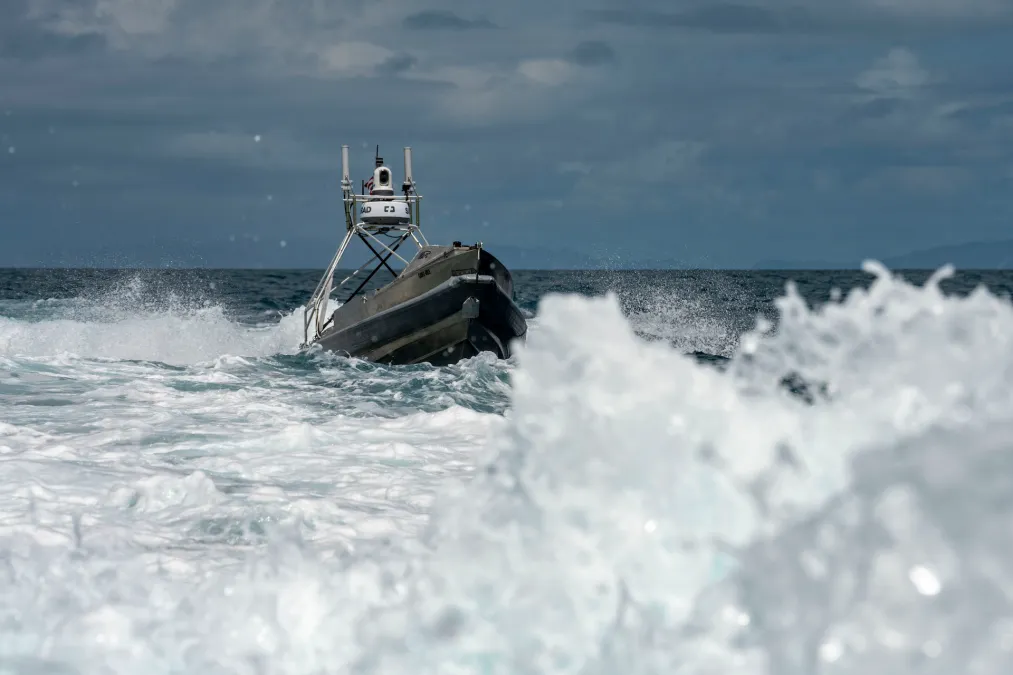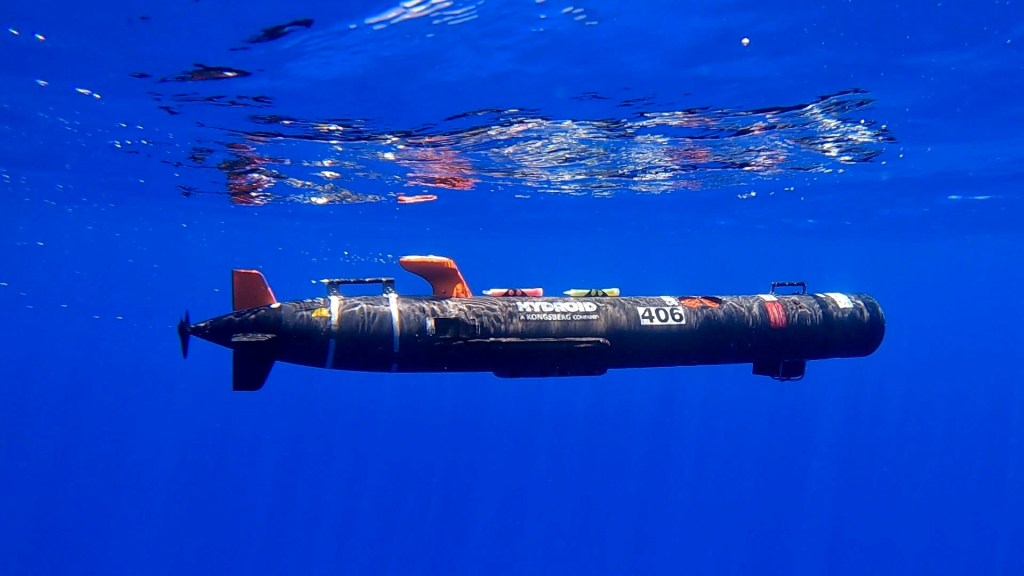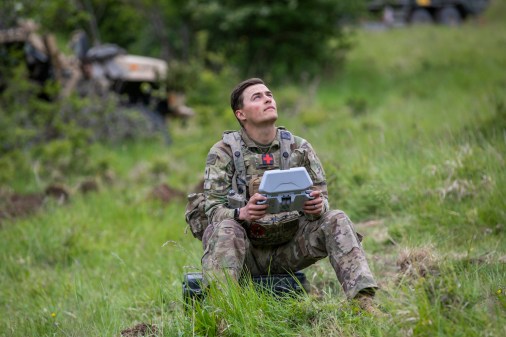CJADC2 needs a hedge to succeed

The Pentagon recently announced that its Combined Joint All-Domain Command and Control initiative has delivered a long-awaited minimum viable capability. However, better sensor-to-shooter connectivity will not make up for the limitations of a one-size-fits-all military reflected in the new U.S. defense budget. To deter China, DoD will need to field specialized forces that can hedge against Beijing’s most challenging plans.
The DoD’s problems are not simply financial — they are structural. The DoD’s global responsibilities are growing in every theater while China can focus its efforts on the Western Pacific. Unlike its Reagan-era buildup, the DoD can no longer afford to field more of today’s multimission planes, ships, or vehicles because they have become too costly to operate and crew. Even with better integration like that being pursued by the U.S. Air Force, China can field targets faster and more cheaply than the DoD can create effective shots on target.
Hedging for uncertainty
For nearly a decade U.S. officials have identified China as the DoD’s pacing challenge and an invasion of Taiwan is its most-stressing scenario. Stopping China’s expanding fleet of troop transports may demand more long-range fires than U.S. forces can deploy, even with CJADC2’s vision of AI-enabled decision aids. The People’s Liberation Army’s multiplying rocket forces further complicate the problem by requiring U.S. ships and aircraft to carry more defensive systems or operate farther away and use longer-range weapons that are more expensive and less numerous.
With outright denial likely off the table, deterrence increasingly depends on creating uncertainty for Chinese leaders that an invasion will go smoothly and incur acceptable losses. But pushing forward ships and aircraft to launch torpedoes or missiles against an invasion fleet is the most predictable U.S. approach — and one China is developing capabilities to counter.
For more than a decade, defense officials argued that the PLA would have difficulty fielding a kill chain that could attack aircraft carriers or mobile ground forces more than a thousand miles from China. In addition to the challenge of delivering precision-guided weapons at that range, the sensors and networks China would need to use could be disrupted or deceived by U.S. electronic warfare systems.
Arguably the shoe is now on the other foot. To stop an invasion, U.S. ships and aircraft operating 500 miles or more from Taiwan will have to find, target, and engage a Chinese force with possibly very little notice. Fighting on its home turf, the PLA has numerous options to break the DoD’s CJADC2 kill chains and increase the confidence of Chinese leaders that an invasion could succeed.
To create uncertainty for the PLA, the DoD will need a more adaptable approach for stopping an invasion than relying on long-range fires alone. In a new report from the Hudson Institute we argue the Pentagon should field specialized forces to hedge against scenarios like the Taiwan invasion in which the one-size-fits-all U.S. military is unable to win at acceptable risk.

Using short-range uncrewed systems in each domain, a hedge force for Taiwan would act essentially as a mobile minefield, damaging transport vessels and warships in narrow “kill boxes” along the Taiwan coast. Just as important, the hedge force would also make long-range fires more effective by slowing the invasion and compelling PLA escorts to activate their defenses, creating targeting opportunities for U.S. forces to exploit through the Joint Fires Network.
Exploiting today’s technology
Although they achieve cutting-edge performance, the DoD’s connectivity initiatives are largely built on existing capabilities, rather than new development and acquisition. CJADC2’s initial instantiation is a descendant of DoD’s Project Maven and the Joint Fires Network implements work matured by DARPA. Going forward, these efforts can take advantage of an expanding range of commercial offerings — like Ukrainian forces who assembled battle networks from Starlink terminals, subscription satellite services, and open source-derived decision support software.
A hedge force for Taiwan could similarly exploit commercial innovation and existing technologies to quickly reach the field. Uncrewed air, surface, and undersea vehicles today incorporate sufficient targeting and guidance automation to find and engage slow-moving troop transports or warships in confined geographic areas. These systems would not need new advancements in AI or sensors and could operate without human intervention beyond programming their rules of engagement.

Small drones like the Switchblade, Altius 700, or A2LE have demonstrated their effectiveness as loitering munitions or by complementing missile attacks in Ukraine. Uncrewed surface vehicles like the Saronic Cutlass or Magura V5 sank more than a half-dozen ships in Russia’s Black Sea Fleet and could pose a lethal threat to Chinese forces nearing Taiwan. And undersea, vehicles like the Speartooth could place a torpedo’s-worth of explosives under a vessel’s hull to cause catastrophic damage. Although they may lack the survivability or destructiveness of traditional weapons, these vehicles will damage transports and make them easier pickings for long-range U.S. fires.
Buying more of today’s ships, aircraft, or weapons even with better integration, will not solve the DoD’s fundamental geographic, strategic, and fiscal disadvantages in stopping a Chinese invasion of Taiwan. To turn the tables and regain the advantage, the Pentagon needs a hedge force that will ensure every shot counts.
Bryan Clark is a senior fellow and director of the Center for Defense Concepts and Technology at the Hudson Institute, and an expert in naval operations, electronic warfare, autonomous systems, military competitions and wargaming. Previously, he served as special assistant to the chief of naval operations and director of the CNO’s Commander’s Action Group, led studies on the Navy headquarters staff, and was an enlisted and officer submariner in the Navy.
Dan Patt is a senior fellow with the Hudson Institute’s Center for Defense Concepts and Technology, where he focuses on the role of information and innovation in national security. Patt also supports strategy at national security technology company STR and supports Thomas H. Lee Partners’ automation and technology investment practice. Previously, he co-founded and was CEO of Vecna Robotics and served as deputy director for the Defense Advanced Research Projects Agency’s (DARPA) Strategic Technology Office.






